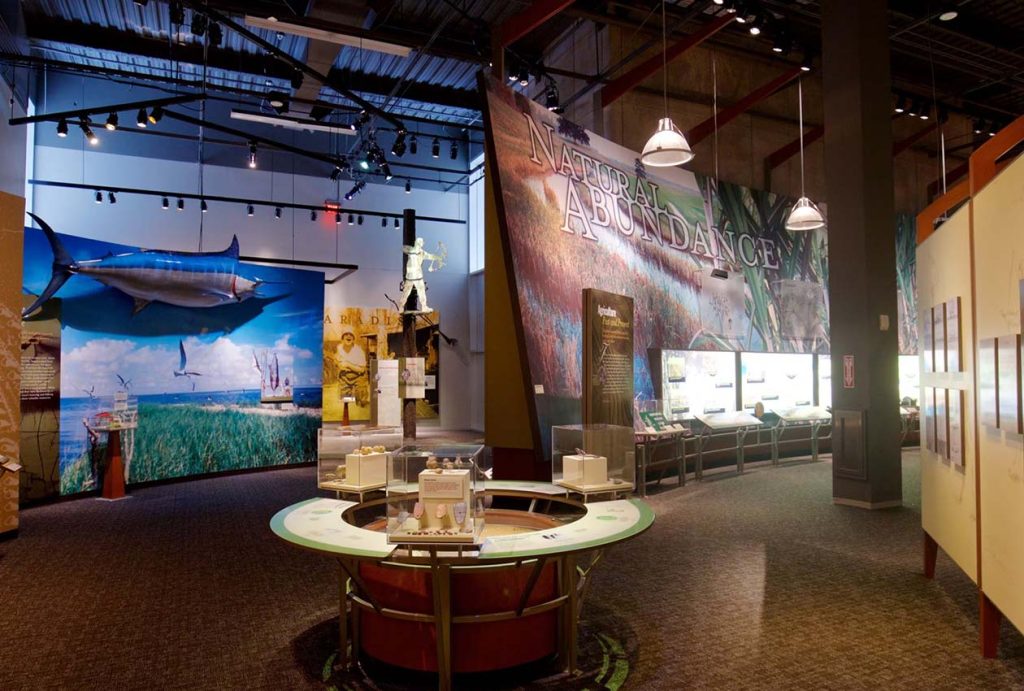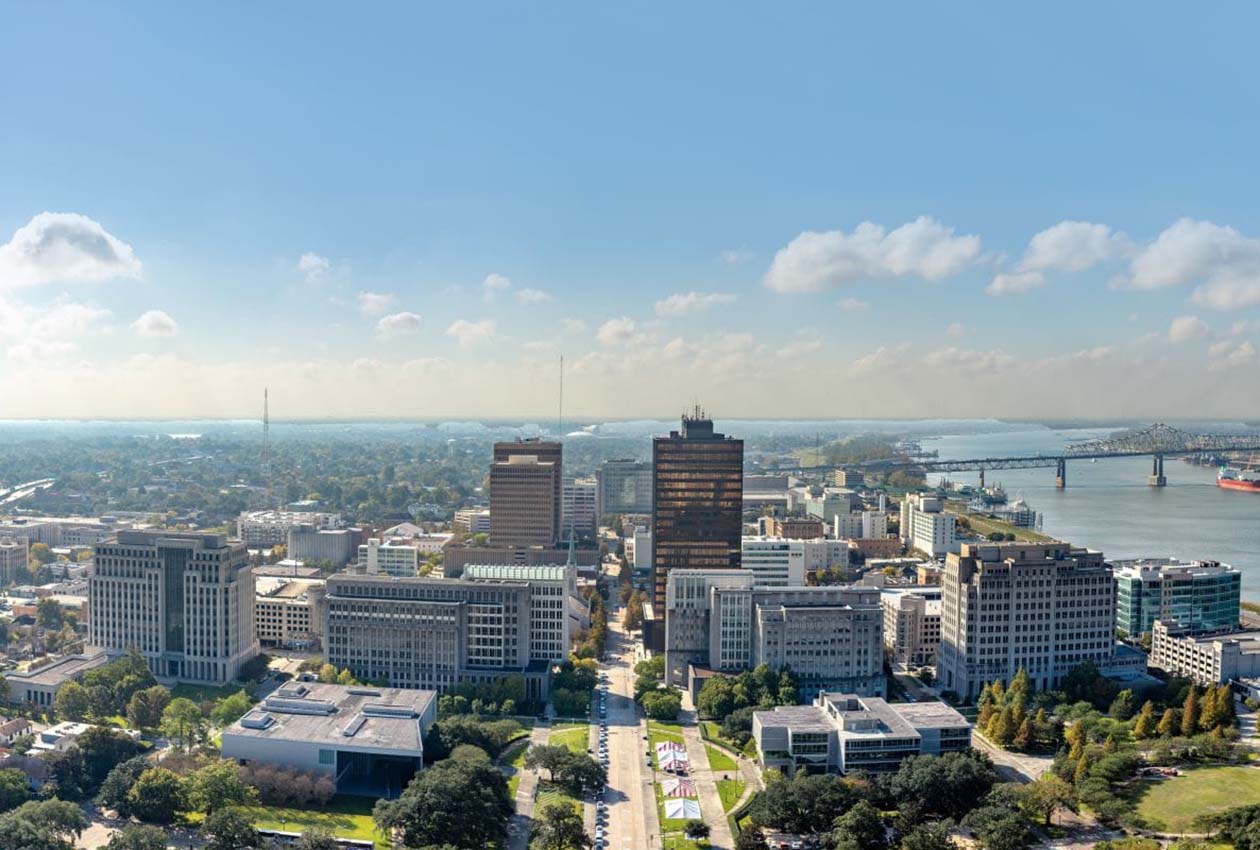Baton Rouge, with its rich tapestry of history and culture, invites visitors to explore its remarkable historical landmarks. From the Gothic Revival splendor of the Old Louisiana State Capitol to the charming elegance of Magnolia Mound Plantation, the city offers a diverse array of sites that each tell a unique story. As you wander through these historic spaces, you’ll uncover the narratives that shaped this vibrant Southern city, experiencing firsthand the architectural grandeur, cultural evolution, and historical significance that define Baton Rouge.
1. Old Louisiana State Capitol
The Old Louisiana State Capitol is located at 100 North Boulevard in downtown Baton Rouge. Completed in 1847, it is a prime example of Gothic Revival architecture and served as the state’s capitol building. It endured severe damage during the Civil War and underwent reconstruction afterward. Today, it is a National Historic Landmark, meticulously preserved and restored to showcase its splendid history and architectural beauty.
Approaching the Old Louisiana State Capitol, its grand appearance immediately captivated me. The towering spires and intricate Gothic decorations evoke a strong sense of history. The building’s exterior, made of sturdy gray stone, is adorned with exquisite carvings and details, reflecting the grandeur and solemnity of a bygone era.
Inside the building, the first sight is the magnificent hall. The ceiling, made of stained glass, allows light to filter through, creating a kaleidoscope of colors on the floor. In the center of the hall stands a splendid staircase with intricately carved wooden railings, showcasing the craftsmanship of the time. This hall, once a significant center of political decision-making, still retains a sense of solemnity.
Walking through the corridors, I saw walls lined with historical photographs and paintings depicting the activities and key figures of the state legislature. There is also an exhibition area detailing the history of Louisiana, the impact of the Civil War, and the restoration process of the building. Every exhibit, every old photograph, told the story of that turbulent era.
Particularly in the second-floor meeting rooms, I could see some antique furniture and decorations, serving as witnesses to the debates of that time. Sitting beside these pieces, I could almost hear the echoes of historic debates. The enthusiastic guide provided a vivid explanation of the building’s historical background, and the detailed stories and materials deepened my understanding of this architectural gem.
2. Magnolia Mound Plantation
Magnolia Mound Plantation is located at 2161 Nicholson Drive, south of downtown Baton Rouge. Built in the late 18th century, it is a legacy of the French colonial period. As one of the wealthiest plantations of the time, it reflects the opulence and prosperity of Southern plantations. Today, it preserves a wealth of historical artifacts, including the main house, garden, and period-appropriate furnishings, attracting history enthusiasts from near and far.
Stepping into Magnolia Mound Plantation, I felt transported to an early 19th-century Southern plantation. The main house, with its elegant architectural style, features intricate wooden decorations and a spacious veranda surrounded by lush gardens. Walking through the corridors of the main house, I could sense the grandeur and luxury of the past.
Inside the plantation house, the rooms are decorated with period-appropriate furnishings and decor. The living room features antique sofas and chairs, with various paintings and ornaments adorning the walls, each piece exuding a strong sense of historical charm. The dining room displays tableware and glassware, recreating scenes of grand dinners and social gatherings with exquisite porcelain and silverware.
The surrounding gardens are equally enchanting. The blooming flowers and verdant lawns create a vibrant atmosphere, with the rose garden being particularly delightful. The roses, like stars scattered across the garden, emit a subtle fragrance. Strolling through the garden, I felt as if I were in a tranquil paradise, where all worries and stresses melted away.
The knowledgeable guides provided detailed explanations about the plantation’s historical background, architectural style, and social context. Through their narratives, I learned about Magnolia Mound’s role during the Civil War and its post-war recovery. Every detail and decoration in the plantation provided deeper insights into the era’s way of life.
3. Riverfront Plaza & City Dock
Riverfront Plaza & City Dock is located at 300 River Road South, along the Mississippi River. This park is not only a favorite spot for Baton Rouge residents but also a key location for showcasing the city’s history and culture. The park features various monuments and historical artifacts that record the development and significant moments of Baton Rouge.
Walking through Riverfront Plaza, I felt a harmonious blend of nature and history. The riverside walkway offers sweeping views of the Mississippi River, with leisurely boats floating on the water and the river shimmering in the sunlight, creating a serene and picturesque scene.
At the northern end of the park stands a monument commemorating the bicentennial of Louisiana’s statehood. The monument reaches skyward, engraved with significant historical moments and figures. Standing before it, I felt a strong sense of historical significance, as if I were transported back to that pivotal moment.
I particularly enjoyed the open-air theater within the park. It frequently hosts cultural events and concerts, and I was fortunate to attend a performance by a local band. The music, blending Southern jazz and country styles, was vibrant and lively. Sitting on the grass, enjoying the music while watching the twilight fall and the lights twinkle on the river, felt like a dreamlike experience.
The park also features display boards and sculptures about Baton Rouge’s history. Through these, I gained insights into the city’s development and key events. The tranquil and beautiful environment makes it an ideal place to relax and learn about the city’s history.
4. Capitol Park Museum

Capitol Park Museum, located at 660 N. 4th Street, is the best place to learn about the history of Louisiana. The museum showcases various aspects of the state’s history, from indigenous peoples to modern times, with a diverse range of exhibits covering different historical periods and cultural events. The museum’s building itself is a blend of modern and historical architectural styles.
Entering Capitol Park Museum felt like stepping into a treasure trove of history. The museum’s exhibits are diverse, ranging from indigenous stone tools and pottery to Civil War artifacts and contemporary objects. Each exhibit portrays a chapter in Louisiana’s history.
The museum’s exhibition areas are divided into various themes, each with detailed explanations and interactive displays. I was particularly fascinated by the Civil War exhibition, which included valuable relics and historical documents, such as weapons, uniforms, and numerous photographs and letters. These exhibits vividly recreated the wartime scenes and the lives of soldiers.
The museum also features an interactive area designed to engage visitors. Through touch screens and interactive displays, I gained a deeper understanding of Louisiana’s history and culture. I especially enjoyed this area, as it provided an immersive experience with the historical artifacts.
The museum’s modern and stylish design, with extensive use of glass, creates a bright and spacious interior. From the museum’s observation platform, I could overlook the entire Baton Rouge cityscape, capturing the city’s essence. It is not only an excellent place to learn about history but also to appreciate the city’s views.
5. Hopes Francis House
Hopes Francis House is located at 5605 Highland Road, a historic mansion built in the mid-19th century. It was once the home of a wealthy local merchant, Hopes Francis. The house retains its architectural style and interior decor, making it a valuable artifact for studying 19th-century Southern life.
Visiting Hopes Francis House was a delightful blend of history and aesthetics. The mansion’s exterior is charming, with pink walls and white columns creating a unique elegance. Inside, the house felt like a historical time capsule, with wallpaper, ceiling decorations, and furniture perfectly recreating the living conditions of the era.
Particularly in the living room, the decor was exquisite. A grand chandelier hung from the high ceiling, and the light filtering through the windows created a cozy and inviting atmosphere. The furniture from the mid-19th century, with its detailed woodwork and elegant fabrics, showcased the luxury of the time.
The kitchen and dining areas were equally impressive. The kitchen displayed various period kitchenware and tableware, recreating scenes of grand feasts. The dining room, with its long table, chairs, silverware, and fine porcelain, evoked images of lavish dinners and social gatherings.
The surrounding garden was equally enchanting, with blooming flowers and a fragrant aroma filling the air. Strolling through the garden, I felt a sense of tranquility and elegance, showcasing the perfect blend of nature and culture. The knowledgeable guide provided detailed insights into the house’s historical background and cultural significance, enhancing my understanding of Hopes Francis House.
6. Magnolia Plantation
Magnolia Plantation is located at 2347 Ferndale Avenue, south of downtown Baton Rouge. Built in the early 19th century, this plantation is a quintessential example of Southern plantation style, reflecting the social structure and lifestyle of the time. The plantation preserves extensive records related to Southern agricultural economy and slavery, making it an important site for understanding Southern history.
Magnolia Plantation is a precious historical treasure. Walking along the plantation’s paths, I could feel the rich historical atmosphere. The main house, with its classic architectural style, features spacious corridors and tall windows, giving the house a sense of openness. The interior decor, with its antique furnishings and elaborate details, highlights the opulence of the period.
Under the guidance of a knowledgeable tour guide, I learned about the plantation’s historical background and social structure. The exhibits on slavery were particularly poignant, giving me a deeper understanding of the era’s complexities and challenges. The plantation’s displays, including items used by slaves, historical documents, and artworks, each told the story of that time.
The surrounding gardens and farmland were well-maintained, with well-kept rows of crops and blossoming flowers. The garden, with its diverse plant life and meticulous design, offered a glimpse into the plantation’s agricultural practices.
7. USS Kidd Veterans Memorial

The USS Kidd Veterans Memorial is located at 305 S. River Road, alongside the Mississippi River. It features the USS Kidd, a Fletcher-class destroyer built during World War II. The memorial honors the service of American veterans and offers insights into the ship’s history and its role in wartime operations.
Visiting the USS Kidd Veterans Memorial was a deeply moving experience. The destroyer, docked alongside the river, is an imposing sight. The ship’s design, with its robust structure and numerous weapons, reflects the strength and resilience of the American naval forces during World War II.
Onboard the ship, I could explore various areas, including the bridge, engine room, and gun turrets. Each area was well-preserved, showcasing the living conditions and operational aspects of the ship during the war. The exhibits provided detailed information about the ship’s missions, crew, and wartime activities.
The memorial area also features various statues and plaques honoring veterans, each inscribed with names and dates. These monuments serve as a tribute to the brave individuals who served in the military. Standing before these tributes, I felt a profound sense of respect and gratitude for their sacrifices.
As you traverse the historical landmarks of Baton Rouge, each site offers a window into the past, revealing the intricate layers of the city’s heritage. From the architectural marvel of the Old Louisiana State Capitol to the serene beauty of Magnolia Mound Plantation and the poignant USS Kidd Veterans Memorial, Baton Rouge weaves a rich narrative of history, culture, and tradition. These landmarks not only preserve the stories of bygone eras but also connect visitors with the vibrant essence of Southern life. Whether you’re captivated by grand architecture, historical artifacts, or the stories of resilience and transformation, Baton Rouge stands as a testament to the enduring legacy of its past, inviting you to explore and appreciate its timeless charm.
